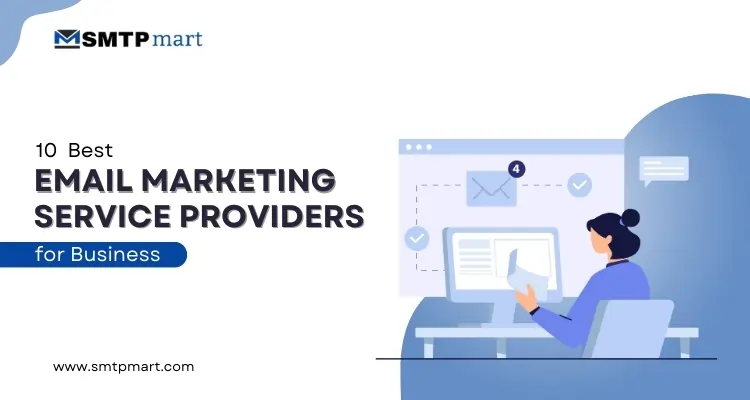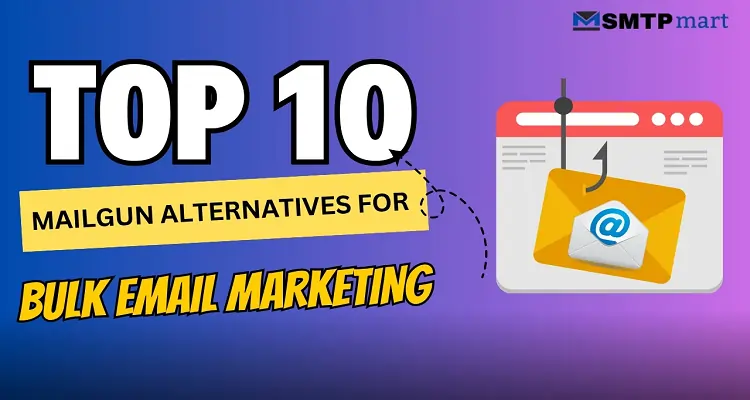Are you tired of manually sending the same emails over and over again? Email marketing automation solves this problem by sending personalized messages to your customers automatically.
Instead of spending hours crafting individual emails, you can set up smart systems that work while you sleep.
Modern businesses use email marketing automation to welcome new subscribers, recover abandoned shopping carts, and nurture leads into loyal customers. This powerful approach saves time, increases sales, and builds stronger relationships with your audience. Companies using automation see 80% more leads and 77% more conversions than those relying on manual email campaigns.
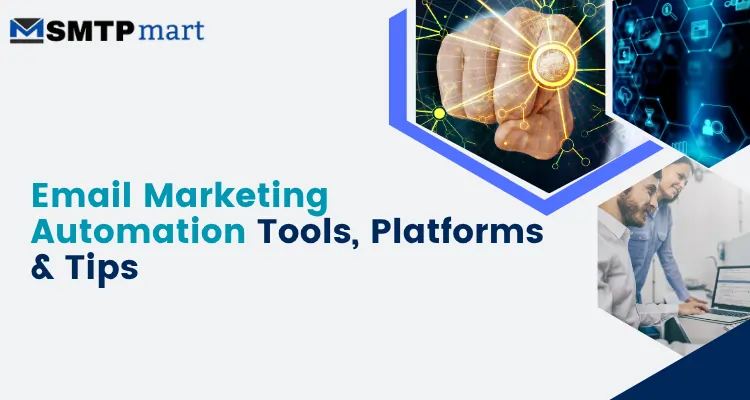
Whether you run a small business or manage marketing for a large company, choosing the right email marketing automation tools makes all the difference. In this blog, I will tell you the best email marketing automation platforms, strategies, and tips to transform your email marketing results in 2025.
What is Email Marketing Automation?
Email marketing automation uses software to send emails to your customers without manual effort each time. This technology acts as your marketing assistant that knows when to send the right email to the right person.
Here’s how it works: You create rules in the software, and then the program follows these rules automatically. For example, when someone joins your email list, the system immediately sends them a welcome email. When someone adds items to their shopping cart but doesn’t complete the purchase, the system waits and then sends a reminder email. When it’s someone’s birthday, the system sends them a birthday message with a special offer.
Email marketing automation makes your business more efficient because it tracks important dates and customer behaviors that you might overlook. You don’t need to spend hours at your computer sending individual emails. Instead, you can focus on other business activities while the automation system handles your email marketing.
How Email Marketing Automation Helps Your Business?
This strategy delivers excellent results for businesses. Studies show that 71% of companies report email marketing automation helps them achieve greater marketing success. The automated emails help you:
- Convert website visitors into customers
- Remind people about products they viewed
- Keep customers satisfied with valuable information
- Increase your sales without additional effort
- Build trust with your audience over time
The advantage is that these automated emails feel personal to each customer. The system can include their name, remember their previous purchases, and recommend products they might enjoy. This makes customers feel valued and more likely to purchase from you again.
Email marketing automation operates 24 hours a day, 7 days a week. While you sleep, eat, or spend time with family, your email system continues working to grow your business. It functions like having a dedicated employee who never takes breaks and always remembers to contact customers at the right moment.
Best Email Marketing Automation Tools for 2025
Here are some of the best email marketing automation tools for 2025:
1. SMTPmart
SMTPmart is the top email marketing automation platform designed for businesses that need reliable email delivery and advanced automation features. The platform combines high deliverability rates with intuitive automation tools that help you reach your customers effectively.
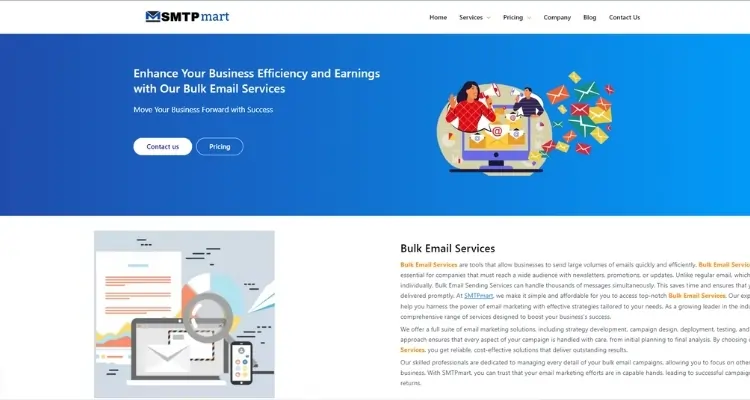
Key Features for SMTPmart:
- High email deliverability rates
- Advanced automation workflows
- Real-time analytics and reporting
- Multi-channel marketing integration
- Dedicated IP options
Pricing:
| Pricing | Cheapest plan | Premium Plan | Cluster Plan |
| SMTP Server Services | $97 / month | $153/ month | $342/ month |
| Bulk Email Services | $25 / month | $150/ month | $350/ month |
2. Mailchimp
Mailchimp remains popular with its user-friendly interface and powerful automation features. You can create complex email marketing automation workflows using their visual builder. The platform offers templates, A/B testing, and detailed analytics to improve your campaigns.
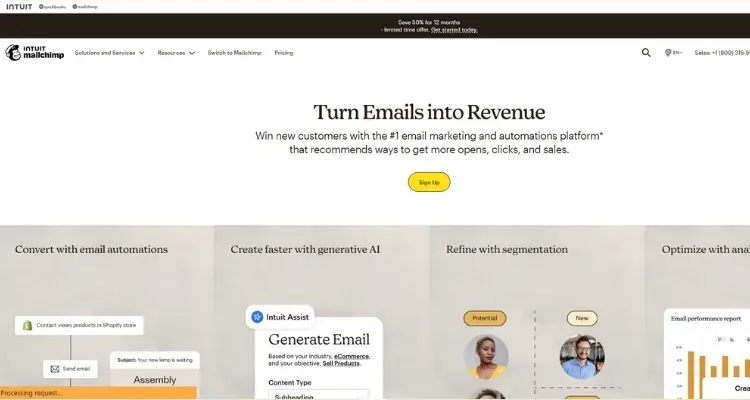
Key Features for Mailchimp:
- Drag-and-drop email builder
- Advanced segmentation options
- Behavioral triggers
- Integration with 300+ apps
Pricing: Free plan available, paid plans start at $13/month
3. DigitalAka
DigitalAka provides the best email marketing automation services for businesses looking for professional-grade email marketing solutions. Their platform focuses on delivering personalized customer experiences through smart automation and data-driven insights.
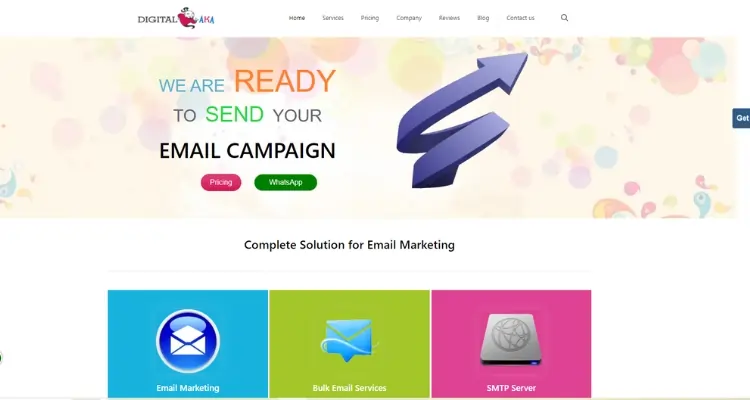
Key Features for DigitalAka:
- Professional email templates
- Advanced customer segmentation
- Automated drip campaigns
- Integration with popular business tools
- Detailed performance tracking
Pricing: Custom pricing based on business needs
4. ActiveCampaign
ActiveCampaign excels at creating advanced email marketing automation strategies. The most highly rated feature in ActiveCampaign is its visual marketing automation builder. With 135+ triggers and actions to choose from, you can easily build effective marketing sequences that include email, SMS, and site messages.
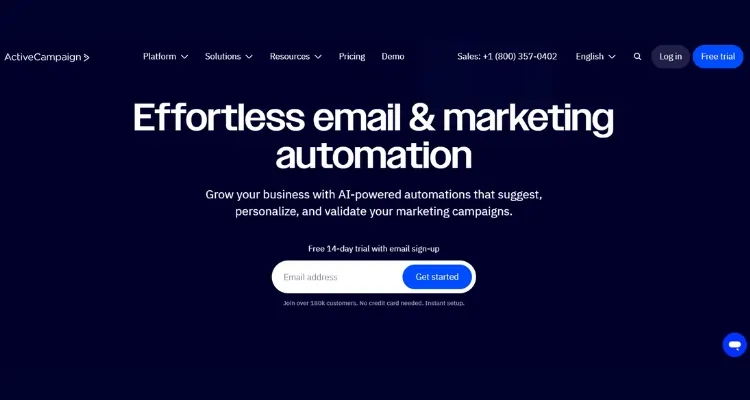
Key Features for ActiveCampaign:
- Visual automation builder
- Machine learning capabilities
- Split testing for automations
- Dynamic content insertion
Pricing: Plans start at $15/month
5. iDealSMTP
iDealSMTP is an easy-to-use email marketing platform that helps businesses send emails that reach their customers’ inboxes. It focuses on making sure your emails are delivered successfully and on time. With tools for automation and tracking, iDealSMTP makes it simple to run effective email campaigns.
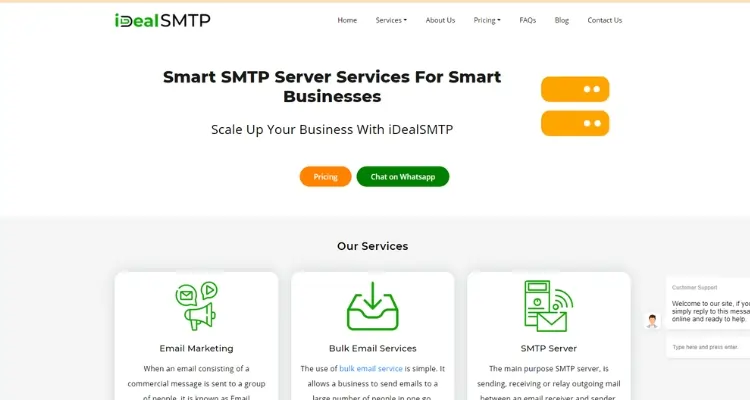
Key Features of iDealSMTP:
- High inbox delivery rates
- Automated email sequences
- Real-time campaign tracking
- SMTP relay services
- Bulk email sending
Pricing: Based on how many emails you send, with competitive and flexible rates.
Top Email Marketing Automation Platforms Comparison
Here is the comparison of the top email marketing automation platforms:
| Platform | Best For | Starting Price | Free Plan |
|---|---|---|---|
| SMTPmart | High deliverability & automation | Custom pricing | Contact for details |
| Mailchimp | Beginners | $13/month | Yes |
| DigitalAka | Professional businesses | Custom pricing | Contact for details |
| ActiveCampaign | Advanced automation | $15/month | No |
| iDealSMTP | Email delivery optimization | Volume-based | Contact for details |
Effective Email Marketing Automation Strategies
Email marketing strategies are necessary, so here are some of the effective email marketing automation strategies:
1. Welcome Series Automation
Create a warm welcome for new subscribers with a series of automated emails. Your first email should arrive immediately after signup, followed by 2-3 emails over the next week. Share your brand story, highlight popular content, and offer special discounts.
2. Abandoned Cart Recovery
Recover lost sales by sending automated emails to customers who leave items in their cart. Send the first email within an hour, followed by reminder emails after 24 hours and 3 days. Include product images and offer incentives to complete the purchase.
3. Re-engagement Campaigns
Win back inactive subscribers with targeted email marketing automation workflows. Identify subscribers who haven’t opened emails in 3-6 months and send them special offers or surveys. This helps clean your list and re-activate interested customers.
4. Birthday and Anniversary Emails
Celebrate special occasions with automated birthday and anniversary emails. These personal touches build stronger relationships and often generate higher open rates than regular campaigns.
Email Marketing Automation Examples That Work
Here are some examples of email marketing automation that work:
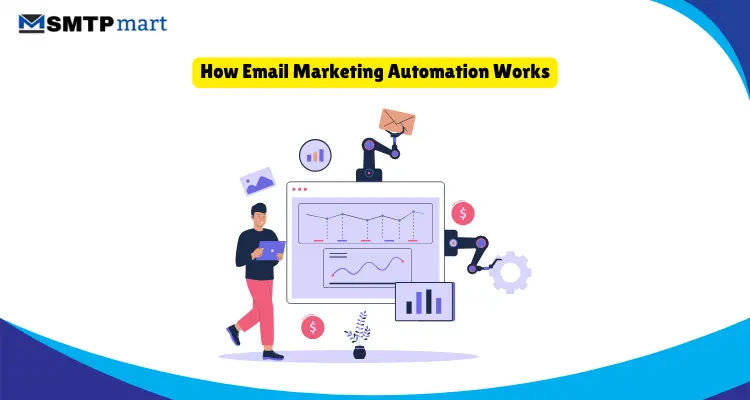
Example 1: SaaS Free Trial Sequence
A software company creates a 7-day automation sequence for free trial users:
Day 1: Welcome and setup guide
Day 3: Feature highlights and tips
Day 5: Success stories and case studies
Day 7: Upgrade offer with special pricing
Example 2: E-commerce Post-Purchase Flow
An online store uses email marketing automation to enhance customer experience:
Immediate: Order confirmation
1 day later: Shipping notification
3 days later: Delivery confirmation
1 week later: Product review request
2 weeks later: Related product recommendations
Example 3: Content-Based Nurturing
A marketing agency nurtures leads with educational content:
Trigger: Downloads marketing guide
Email 1: Additional resources and tips
Email 2: Case study of a successful campaign
Email 3: Invitation to free consultation
Best Practices for Email Marketing Automation
Some of the best practices for email marketing automation are:
1. Segment Your Audience
Divide your email list based on demographics, behavior, purchase history, and preferences. Use your customer support and SMS engagement data to inform your email marketing strategies to create more targeted campaigns.
2. Personalize Your Messages
Go beyond using first names in subject lines. Personalize content based on past purchases, browsing behavior, and interests. Dynamic content helps you show relevant products and offers to each subscriber.
3. Test and Optimize
Continuously test different elements of your email marketing automation:
- Subject lines
- Send times
- Email content
- Call-to-action buttons
- Automation triggers
Pay attention to key metrics such as open rates, click-through rates, and conversion rates to gauge the effectiveness of your campaigns and make improvements.
4. Mobile Optimization
Ensure your automated emails look great on mobile devices. Over 60% of people read emails on their phones, so responsive design is essential for success.
5. Maintain List Hygiene
Engage in regular maintenance, like removing hard bounces immediately to avoid negative impacts on deliverability rates. Clean lists improve your sender reputation and increase email deliverability.
Advanced Email Marketing Automation Tips
Here are the advanced email marketing tips:
1. Use AI and Machine Learning
Artificial intelligence (AI) is reshaping how we approach email marketing. AI analyzes behavior to schedule emails when they’re most likely to be opened. Many email marketing automation tools now include AI features for better performance.
2. Implement Lead Scoring
Assign points to subscribers based on their actions and engagement levels. This helps you identify hot leads and send them to your sales team at the right time.
3. Create Multi-Channel Workflows
Combine email with SMS, social media, and direct mail for comprehensive email marketing automation strategies. This approach increases touchpoints and improves conversion rates.
4. Use Behavioral Triggers
Set up automations based on specific customer actions:
- Website visits
- Product page views
- Email clicks
- Purchase behavior
- App usage
5. Dynamic Content Insertion
Show different content to different segments within the same email. This reduces the number of campaigns you need to create while maintaining personalization.
Common Email Marketing Automation Mistakes to Avoid
Here are some of the common email marketing automation mistakes to avoid:
1. Over-Automation: Although it may sound counterintuitive, just automating every piece of your email program won’t solve all your email marketing problems. Start by automating one portion of your program and gradually expand.
2. Ignoring Data Quality: Poor data leads to irrelevant messages and high unsubscribe rates. Regularly clean your lists and verify contact information.
3. Forgetting to Test: Always test your automation sequences before launching. Send test emails to yourself and team members to catch errors.
4. Generic Messaging: Avoid sending the same message to everyone. Use segmentation and personalization to make emails relevant to each recipient.
5. Not Monitoring Performance: Set up regular reporting to track your automation performance. Identify which sequences work best and optimize underperforming campaigns.
Choosing the Right Email Marketing Automation Services for Businesses
Consider these factors when selecting email marketing automation platforms:
1. Business Size and Needs: Small businesses might prefer simple tools like Mailchimp, while large enterprises need robust platforms like HubSpot or ActiveCampaign.
2. Integration Requirements: Choose platforms that integrate with your existing tools:
- CRM systems
- E-commerce platforms
- Social media tools
- Analytics software
3. Budget Considerations: Factor in both monthly costs and potential ROI. More expensive platforms often provide better features and support.
4. Ease of Use: Consider your team’s technical skills. Some platforms require more setup and training than others.
5. Scalability: Select a platform that can grow with your business. Look for flexible pricing and feature upgrades.
Future of Email Marketing Automation
Email marketing automation continues evolving with new technologies and customer expectations. Key trends for 2025 include:
1. Hyper-Personalization: Advanced AI creates unique experiences for each subscriber based on real-time data and predictions.
2. Interactive Emails: More brands use interactive elements like polls, surveys, and shopping carts directly in emails.
3. Privacy-First Approach: New regulations require transparent data collection and give customers more control over their information.
4. Voice and Visual Search Integration: Automation sequences adapt to how people search and interact with content using voice assistants and image recognition.
Measuring Email Marketing Automation Success
Track these key metrics to evaluate your email marketing automation workflows:
1. Open Rates: Measure how many people open your automated emails. Industry average ranges from 20-25%.
2. Click-Through Rates: Track clicks on links and calls-to-action. Good click-through rates typically range from 2-5%.
3. Conversion Rates: Monitor how many subscribers complete desired actions like purchases or sign-ups.
4. Revenue Per Email: Calculate the revenue generated by each automated email campaign.
5. List Growth Rate: Track how quickly your email list grows through automation-driven opt-ins.
FAQs
Here are some frequently asked questions on email marketing automation:
Email marketing automation uses software to send personalized emails to customers automatically based on predefined rules. For example, it can send welcome emails, reminders for abandoned carts, or birthday greetings without manual intervention.
Automation saves time, increases sales, and builds better customer relationships. Businesses using automation report 80% more leads and 77% higher conversions compared to manual email campaigns.
Businesses use automation for various purposes, such as:
Sending welcome emails to new subscribers
Recovering abandoned shopping carts
Nurturing leads with drip campaigns
Celebrating customer milestones like birthdays or anniversaries
Some of the best tools include:
1. SMTPmart: Known for high deliverability and advanced automation.
2. iDealSMTP: Good for beginners with its user-friendly interface.
3. ActiveCampaign: Offers advanced automation and machine learning features.
Absolutely! Automation helps small businesses save time and resources by streamlining communication. Tools like Mailchimp offer affordable solutions suitable for smaller operations.
To make the most of automation, businesses can:
1. Implement a welcome email series for new subscribers.
2. Use abandoned cart recovery sequences to boost sales.
3. Personalize emails based on customer behavior and preferences.
4. Regularly test and optimize campaigns for better results.
